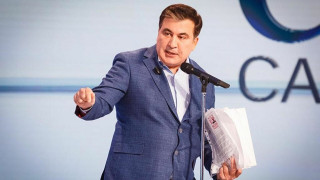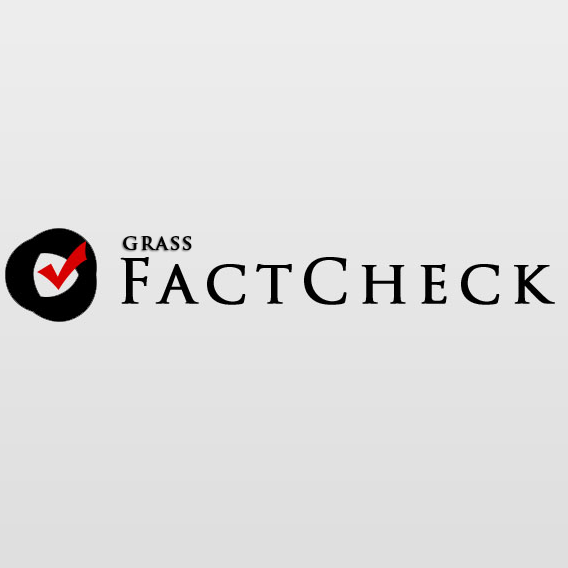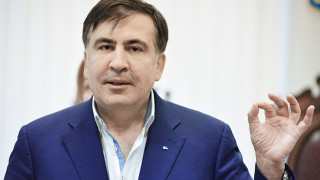On 13 January 2021, a trial was conducted at Tbilisi City Court over Mikheil Saakashvili’s border trespassing case. The third President of Georgia also attended the trial. Mr Saakashvili delivered a speech in court and spoke about the state of the country. As he stated, the situation in Georgia was a reason behind his return to the country. FactCheck verified key statements from his speech and presents an analysis of three different claims below. In addition, FactCheck will continue to publish articles in the future about other facts voiced in Mikheil Saakashvili’s speech.
Claim N1: “At the end of 2021, utility bills went up for our citizens. Energy which cost GEL 0.11 at most in my time, and promises were made to halve it, now costs GEL 0.265.” (From 24:00)
Verdict: MOSTLY TRUE.
As we know, energy was supplied with planned power outages to the Georgian population for a certain period of time in the 1990s. In 2006, the energy tariff increased from GEL 0.1 to GEL 0.15. As a result of this change, energy supply increased and the population started to save more electricity which made a 24/7 energy supply possible across the country. In 2007, energy generation in Georgia increased by 300% as compared to the previous year.
According to the ordinance of the Georgian National Energy and Water Supply Regulatory Commission (GNERC), energy prices for different categories of customers (both Telasi and Energo-Pro) fluctuated between GEL 0.11 and GEL 0.149.
Cutting energy prices was one of the Georgian Dream’s campaign pledges. At the end of 2012, the GNERC and energy companies were “instructed” to find a resource to reduce tariffs. According to the decision adopted in December 2012, the tariff indeed decreased. The price for individual customers who consumed under 300 kwt/h energy decreased by GEL 0.0354 whilst the price decreased by nearly GEL 0.027 for those consuming over 300 kwt/h. The energy tariff remained the same for legal entities. The reduction of tariffs was largely carried out at the expense of cutting the share of profits of the energy companies in exchange for a lessening of investment obligations for those companies. Since April 2013, the energy tariff has returned to its previous mark. In September 2015, the energy tariff slightly increased again (except for individual customers who consumed less than 100 kwt/h of energy).
Since December 2016, energy tariff for Energo-Pro customers has increased by nearly GEL 0.033. The further hike in tariffs occurred in December 2017 and this concerned both Energo-Pro and Telasi customers.
The last time the GNERC made a decision to increase the energy tariff was December 2020 with the decision coming into force from 1 January 2021. However, given the Government of Georgia’s decision to subsidise higher energy prices, this growth did not concern the majority of individual customers (except for those who consumed over 300 kwt/h of energy) over the course of 2021. In fact, the population will start to pay higher energy prices starting from January 2021 (see FactCheck’s article for full details).
Table 1: Energy Tariffs for Residential Customers in 2010 – 2021 (GEL / Kwt/H Excluding VAT)

Source: Legislative Herald of Georgia
As illustrated by these figures, energy prices increased from January 2021 and amounted to GEL 0.265 including VAT (tariffs in the table are excluding VAT). However, of note is that the tariff in 2016 increased to GEL 0.15 on average (excluding VAT). Therefore, the energy tariff under the United National Movement’s rule was over GEL 0.11, although the growth that followed is still substantial.
In regard to natural gas tariffs, they vary for individual customers across the three largest suppliers. For customers of KazTransGaz, the upper threshold of the tariff did not change in 2012-2017. However, the GEL 0.05 price reduction from March 2013 happened at the expense of subsidies and was largely a political decision. Natural gas tariffs decreased at the expense of the profits of the Georgian Oil and Gas Corporation (GOGC). The GOGC cut the natural gas supply price for distribution companies. In July 2017, subsidy memoranda were revoked and this practice also ended.
For people living in Tbilisi, the natural gas price increased from June 2021 and is now GEL 0.457 instead of GEL 0.391.
Table 2: Natural Gas Tariffs for Residential Customers Excluding VAT in 2012-2021

Source: GNERC
In regard to the water tariff, water bills have gone up for people living in Tbilisi, Rustavi and Mtskheta since 1 January 2018. The GNERC increased the tariff for customers in Tbilisi who have water meters installed by GEL 0.063 per one cubic metre of water and it now amounts GEL 3.29. For those who pay water bills in terms of the number of household members, the tariff increased by GEL 0.75 per individual and reached GEL 3.888. For the commercial sector, the new tariff was set at GEL 4.40. For people with water meters in Mtskheta, water charges increased by GEL 0.12 whilst the fixed water charges per person for customers without meters increased by GEL 1.48 (GEL 3.888 per person).
The next changes in water tariffs occurred in 2020. In particular, for customers of Georgian Water and Power with meters, the price for one cubic meter for household consumption increased by GEL 0.171 - from GEL 0.329 to GEL 0.5 whilst prices went up by GEL 0.626 per person from GEL 3.892 to GEL 4.518 for customers without meters. In regard to non-household consumption, the water tariff increased by GEL 2.103 from GEL 4.400 to GEL 6.503.
Water tariffs also increased for customers of Rustavi Water. In particular, the price for one cubic meter of water for household consumption for customers with meters increased by GEL 0.095 – from GEL 0.405 to GEL 0.50 whilst prices went up by GEL 0.723 per person – from GEL 2.281 to GEL 3.004 for customers without meters. In regard to non-household consumption, the tariff increased by GEL 0.059 – from GEL 3.644 to GEL 3.703.
Of note is that since October 2012 (the Georgian Dream’s coming to power) to October 2012, utility bills (tariffs for water, energy, natural gas and others) increased by 22.5%.
Given the aforementioned facts, the population’s energy and water bills went up by the end of 2020 whilst tariffs on natural gas increased from June 2021. In regard to the Georgian Dream’s rule in sum, they cut the energy tariff immediately after coming to power, although since April 2013 utility bills have been rising despite the fact that it was one of the Georgian Dream’s major campaign pledges to substantially cut utility tariffs. Although under Mikheil Saakashvili's rule the highest energy tariff was GEL 0.177 instead of GEL 0.11, growth in this component is still drastically high. Therefore, Mikheil Saakashvili’s statement is MOSTLY TRUE.
Claim N2: “More than 73,000 students have their status suspended. This is ten times more than under my time. There are 73,000 students who cannot study because of a lack of money.” (From 38:20).
Verdict: MOSTLY TRUE.
According to the information of the Ministry of Education and Science (see FactCheck’s article), there were 73,020 students who had their status suspended by the end of 2020. Of this amount, 29,306 students have their status suspended because of tuition fee debts which constitutes 40.1% of all students with a suspended status. In regard to the previous years, there were 70,239 students with a suspended status as of November 2019 and 64,898 in 2018. Since, 2013, the number of students with a suspended status, including those whose status was suspended because of debt, is as follows:
Table 1: Number of Students with Suspended Status in 2013 – 2020

Source: Educational Management Information System LEPL
As illustrated by the table, the number of students with a suspended status has indeed been growing in the past few years. However, the number skyrocketed in 2018 when the number of students with a suspended status increased by 19,717 as compared to the previous year. In the same year, the number of students with a suspended status because of debt also doubled. Generally, the number of students who had their status suspended because of financial reasons is also growing. The number of students in this group was the highest in 2019 and their share in total number of students with a suspended status amounted to 42% whilst the share of students with a suspended status was the highest at 45% in 2018. As mentioned earlier, the number of students with a suspended status this year is 73,020 and this figure is in fact 3.3 times higher as compared to that of 2013 and not ten times bigger as claimed by Mikheil Saakashvili. In addition, as mentioned earlier, the number of students who had their status suspended because of financial reasons is 29,306 which constitutes 40% of the total amount of students with a suspended status. This figure is nine times higher as compared to same figure in 2013.
Therefore, FactCheck concludes that Mikheil Saakashvili’s statement is MOSTLY TRUE.
Claim N3: “The inflation rate this year reached a historic high at 14% although these are lowered prices [food products and medicine in fact became more expensive].” (From 25:00).
Verdict: MOSTLY FALSE
According to the information of the National Statistics Office of Georgia, the inflation rate increased by 0.3% in December 2021 as compared to November 2021 whilst the annual inflation rate in Georgia reached 13.9%. The current high inflation is a critical problem for the population, particularly amid the pandemic which naturally involves economic restrictions.
In 2003-2021, December’s annual inflation indeed reached its maximum and, therefore, that part of Mikheil Saakashvili’s statement is true. Generally, higher inflation as compared to December 2013 was registered for the last time in December 1995 when the annual inflation was nearly 57%. However, despite the fact that annual inflation in December has a wider statistical reflexion as compared to other months because it shows the final dynamic of a specific year, a discussion within a historic context on the past inflation rate based on one-month inflation alone is manipulative. Naturally, high annual inflation for the population is a burden both in December and in any other month. In 2003-2021, higher inflation as compared to December 2021 was registered in May 2011 (14.33%) and July 2006 (14.52%). Therefore, there were instances under Mr Saakashvili’s rule when inflation rates were higher as compared to the current one.
On the other hand, Mikheil Saakashvili highlights that price increase for some groups of goods or a specific good is greater as compared to the general inflation rate. It is true that the price increase for food and non-alcoholic beverages was much higher in the last months of 201 as compared to the general inflation rate. In the course of 2021, maximum annual inflation vis-à-vis food and non-alcoholic beverages amounted to 18.4%. However, inflation vis-à-vis food and non-alcoholic beverages was even higher under the United National Movement’s rule as compared to the current rate. For instance, inflation in regard to food and non-alcoholic beverages was 30.7% in May 2011 which is 12.3 percentage points higher as compared to the highest inflation figure in 2021. The graph below shows general inflation as well as inflation vis-à-vis food and non-alcoholic beverages.
Graph 1: Annual Rate of Inflation and Annual Inflation for Food and Non-Alcoholic Beverages

Source: National Statistics Office of Georgia
Mikheil Saakashvili’s statement on inflation and how strongly it affects the people contains a kernel of truth. However, the third President of Georgia leaves the fact that crisis and post-crisis situations generally have their temporary impact over economic indicators beyond the context. Therefore, it is impossible to fully understand the situation in the economy whilst ignoring the factor of the pandemic. It was precisely because Mikheil Saakashvili highlighted the dynamics of economic indicators in the crisis and post-crisis periods that we brought forward the cases of high inflation under his tenure as president whilst verifying this statement. Therefore, given the fact that the context was overlooked, there is an imprecise interpretation of facts and these facts being only partially accurate, FactCheck concludes that Mikheil Saakashvili’s statement is MOSTLY FALSE.








